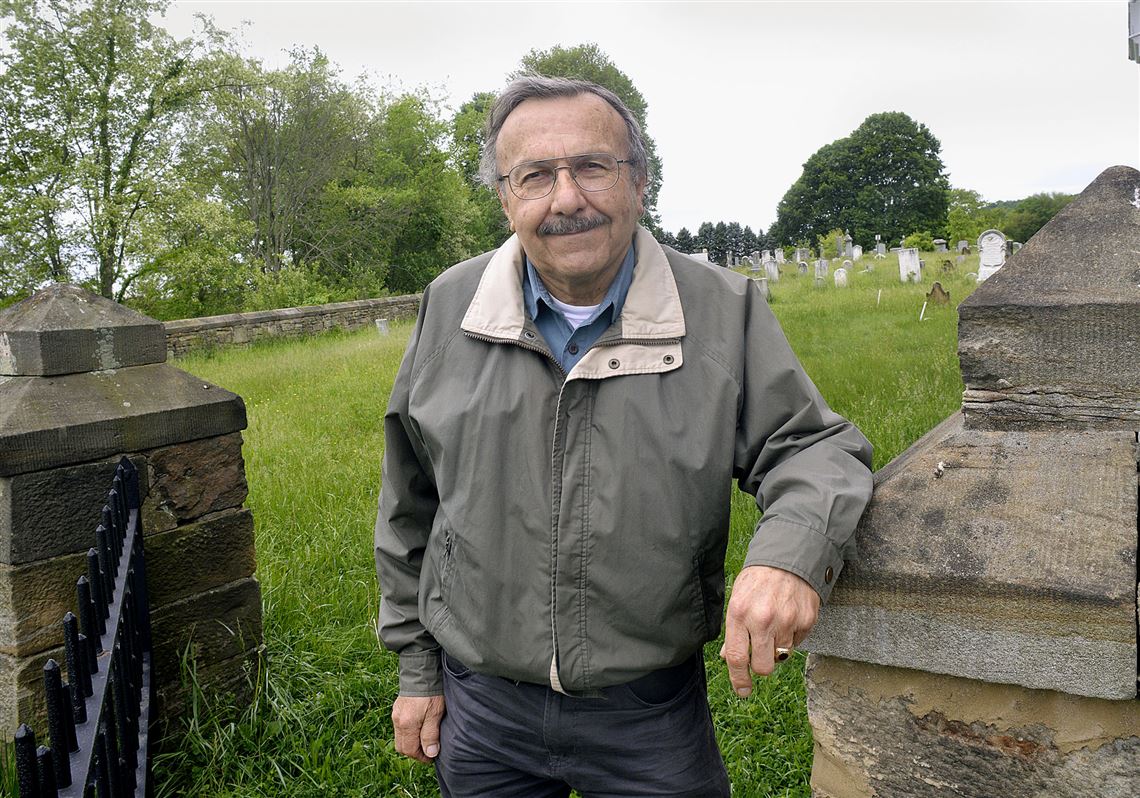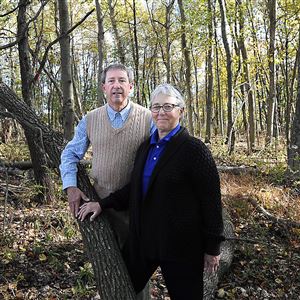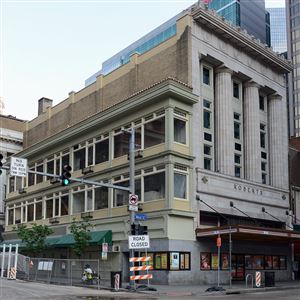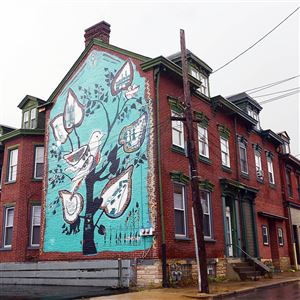Gen. John Neville likely would have appreciated the expert help the new owners are getting to maintain his family’s 18th-century home in Collier.
Woodville Plantation is one of 42 historic properties in southwestern Pennsylvania protected through preservation easements overseen by the Pittsburgh History & Landmarks Foundation.
As part of its legal agreement with a variety of property owners, the foundation has experts inspect the exteriors and grounds of each site annually. The purpose of the visits is to ensure that no inappropriate or destructive changes are being made to facades or landscaping, a spokesman for the foundation said.
“When we acquire an easement, it gives us ownership rights to the [building] exterior, the grounds and sometimes air rights,” said Karamagi Rujumba, the foundation’s director of public communication and advocacy. “We have a proprietary role in making sure those aspects of the properties are not changed or taken down without our approval,” he said.
Just as importantly, the agreement allows property owners to make use of the expertise of the foundation and its preservation experts. “Having this relationship gives us an extra set of eyes to look at problems and proposed changes to our property,” Rob Windhorst said. “PHLF has connections to an incredible number of resources.” Mr. Windhorst is president of the Neville House Associates, an all-volunteer organization that owns and operates Woodville as a historic home.
Neville House, built in multiple stages starting in about 1775, has some original window frames and glass that date back more than 200 years. Some of the panes still carry the names of relatives and guests etched into them during the 18th and early 19th centuries.
When it came time to restore the windows, the foundation was able to connect Neville House Associates with glass expert John Kelly, owner of Kelly Art Glass in Millvale, Mr. Windhorst said.
Donation of a preservation easement guarantees that historic buildings will continue to be protected when they pass to new owners, Mr. Rujumba said. That was important to Historic Harmony Inc., president John Ruch said. The nonprofit organization donated preservation easements on seven of its properties in Harmony and Jackson to the foundation in 2009. The foundation is a “qualified organization” permitted to accept and oversee easements under the federal Internal Revenue Code.
Historic Harmony granted a similar easement on an eighth property, the Bishop John Boyer House in Jackson. When Historic Harmony sold that property to a private buyer, the terms of the agreement remained in force.
Historic Harmony also made a donation to the landmarks foundation to help cover the costs of making annual site visits and to defend and enforce the terms of the easements, Mr. Ruch said.
Harmony was founded in 1804 as a refuge for members of the Harmonist Society, a German communal sect seeking religious freedom. A decade later, the community was sold to a Mennonite farmer. Historic Harmony’s properties all date from the early 19th century period of Harmonist and Mennonite ownership.
Preservation easements provide additional insurance that the buildings and grounds will be appropriately maintained. “Nobody knows what the future will bring,” Mr. Ruch said. While Historic Harmony has been around since 1943 and expects to continue to operate for many more decades, there are no guarantees.
“We wanted to be sure these sites would be protected whether Historic Harmony continued to exist or not,” he said. “The owners of private properties [covered by easements] feel the same way — they want to assure their properties will be protected in perpetuity.”
In addition to buildings, Historic Harmony’s properties protected with preservation easements include Harmonist and Mennonite cemeteries and an undeveloped piece of land in Jackson called Vineyard Hill.
Vineyard Hill, on Evergreen Mill Road, is the site of a stone seat carved from a rock outcropping. That was the spot where George Rapp, the founder of the Harmony Society, would meditate and keep an eye on the community below.
The annual inspections thus far have been painless, Mr. Ruch said. “They let us know when they are going to come out, but we’ve never had any issues,” he said.
“My personal view is that individuals and organizations that care about their historic structures should consider doing this,” he said. “We’re still seeing way too many historic structures disappear or get screwed up.” Such ill-advised restoration projects, undertaken without appropriate review, are often referred to as “remuddling.”
Preservation easements are among the strongest tools available to protect historic structures, Mr. Rujumba said. “It is a legal, binding agreement that will survive generations of ownership,” he said.
Individuals, partnerships, businesses and nonprofit organizations that own historic structures can apply to donate easements. Tax-paying entities can qualify for a federal charitable deduction if they meet Internal Revenue Code requirements. Calculation of the deduction requires a “qualified appraisal” of value of the easement done by a third-party “qualified appraiser.”
Properties already covered by preservation easements include several well-known industrial and commercial buildings, including the Cork Factory Lofts in Pittsburgh’s Strip District and several buildings on Wood Street, Downtown. One of the Wood Street structures was the longtime home of J. R. Weldin Co., a stationery and gift store.
Agricultural land and buildings, including the Jonathan Wycoff Farm and the Van Kirk House and Farm, both in Elizabeth Township, are covered by easements. The exteriors of several late 19th century private homes on Holland Avenue and on Jeanette Street in Wilkinsburg also are protected by preservation agreements.
Thomas Keffer, the foundation’s property and construction manager, has more than 30 years of experience working with preservation projects and standards. He is responsible for the annual inspections.
Agreeing on proposed changes to building exteriors and grounds is a collaborative effort, Mr. Rujumba said. Discussion of a new fence for a private home in the 800 block of Holland Avenue in Wilkinsburg provided a good example of how the process works, David Farkas said. He is the foundation’s associate director of real estate programs and provides day-to-day management of the easement program.
After the homeowner proposed a fence design, foundation staff reviewed the plan. They agreed the design would be appropriate for the neighborhood and for the era in which the home was built, Mr. Farkas said. “It worked out well for everybody,” he said.
Mr. Windhorst likes the broad protections that the preservation easement offers to Neville House, which is the oldest home in Allegheny County open to the public. Should a future Neville House Associates board decide, for example, to paint the house purple, the landmarks foundation could step in to protect its historical integrity, he said.
In addition to exterior colors, that oversight responsibility extends to such issues as fencing and even landscaping. “If we want to dig a hole and plant a tree, we have to get approval [from the landmarks foundation],” Mr. Windhorst said. The preservation easement prevents institutions and individuals from “making dramatic mistakes.”
Those seeking more information on donating preservation easements should contact Mr. Farkas at the Pittsburgh History & Landmarks Foundation, 412-471-5808.
Len Barcousky: lbarcousky@post-gazette.com or 724-772-0184. Find other stories in this series by searching “Barcousky” and “eyewitness” on www.post-gazette.com. Len Barcousky is leading a one-day bus tour June 6 to French and Indian War sites. For details: www.post-gazette.com/pgu.
First Published: May 29, 2015, 4:00 a.m.




















